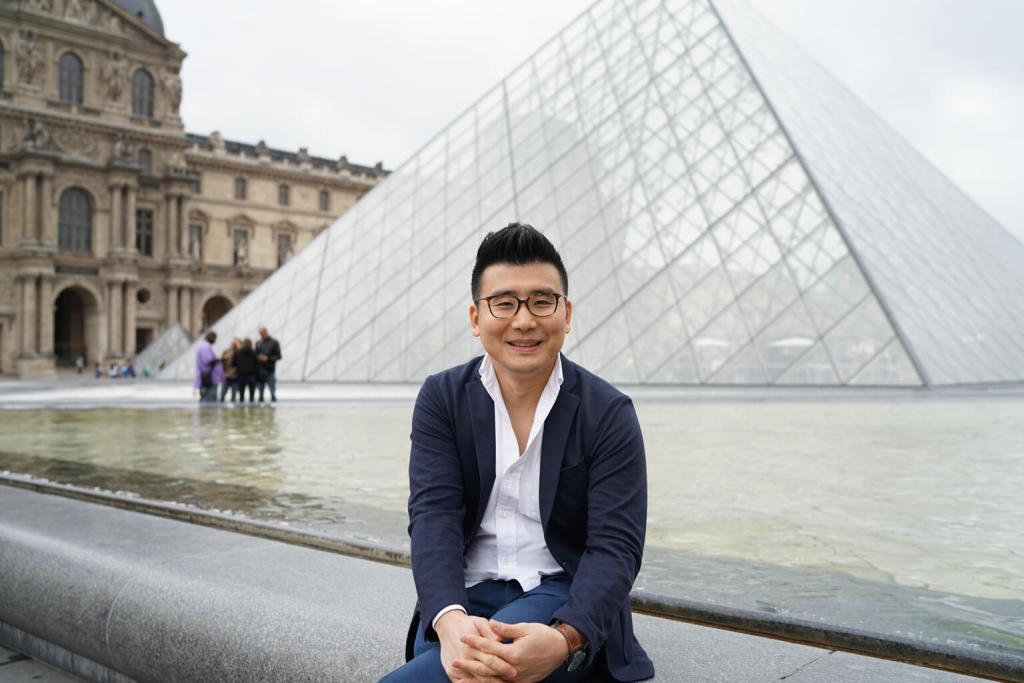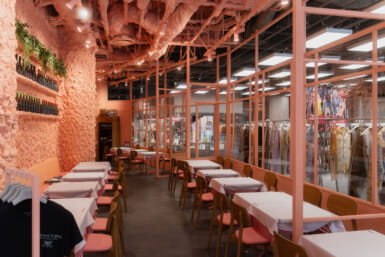Continuing our 10 Questions series, we recently chatted with restaurateur Kosei Kamatani about what it’s like to run several successful Japanese eateries in the food-obsessed city of Hong Kong.
1. Can you tell us about your family’s background in hospitality?
It started with my grandparents who first moved to Hong Kong from Japan in the ’70s. As a family we’ve actually been living here for a few generations. Back then, Hong Kong was like the wild west. There wasn’t much going on but there was a lot of pent-up energy and opportunities to launch a business.
My grandparents looked towards the hospitality industry and were actually the ones who opened the very first karaoke lounge in Hong Kong at that time. Together with my mother they also opened Ippei-an in 1984. That was the first ramen restaurant in the city. It started as a very simple operation with your basic shoyu ramen, chahan and some side dishes. Our two Ippei-an outlets are still running to this day but we’ve expanded the menu to include more popular items such as tonkotsu ramen.
2. Did that inspire you to also pick up the mantle and build your own business in food?
Not initially. When I graduated from college in the US and returned to Hong Kong, my parents wanted me to take over the family business. But I wasn’t interested in it back then. Instead, I ended up working in accounting at one of the “Big Four” consulting firms for three years. It was a horrible experience and made me realize that it wasn’t what I wanted to do with my life. I began to think about building something of my own while still being within the realm of my family’s expertise.
3. What was the idea or inspiration behind opening up Via Tokyo?
My friends and I opened our first froyo shop in 2009. We ended up expanding rapidly as the trend boomed in Hong Kong but it also died off very quickly and we had to close everything. I needed to save the business somehow and started thinking about other concepts we could switch to.
View this post on Instagram
Via Tokyo, my current dessert bar, was born out of that pivot. There weren’t really any Japanese dessert specialty stores in Hong Kong at the time and nothing specifically for matcha. The closest to matcha dessert people ever got was green tea ice cream at a conveyor sushi place which isn’t the same thing. We decided to focus on matcha and it worked out for us. Nowadays matcha is so common, but back then in Hong Kong, incorporating it into desserts was considered quite innovative.
4. You also have your own ramen bar separate from Ippei-an, tell us a bit about how Ramen Jo came to be.
The name for Ramen Jo was inspired by an old boxing manga called Ashita no Joe. In the manga, the main character is an underdog who goes around the world fighting all of the best boxers. There are parallels to the story and how we created the brand ‘Ramen
Jo’ from scratch against the advice of many people who thought it would be better if we invested in a big ramen chain from Japan.
Where Ippei-an is more an Izakaya-style restaurant that has ramen, Ramen Jo is a bespoke ramen eatery. Again, the idea of a restaurant focused on one specific dish is common in Japan but was unheard of in Hong Kong at the time. It was nerve-wracking to open because we bet everything on people liking our ramen. If it wasn’t good, they wouldn’t come.
View this post on Instagram
We were lucky that our ramen was well received. Our style is tonkotsu and everybody loves that here. People from Hong Kong tend to prefer heavier tastes and rich flavors, so tonkotsu is preferred over something like a shoyu broth. In the second year of our operation, we were listed in the Michelin Guide as a Bib Gourmand (a restaurant offering great food at reasonable prices), and it’s something we’ve been able to maintain every year since.
5. What do the people in Hong Kong think of Japanese cuisine?
Japanese food is king in Hong Kong and it’s been that way for the past 20 to 30 years. Chinese food consumed at cha chaan teng (Hong Kong-style cafés) is still the most common but Japanese food would be a close second. The ramen boom that started 10 to 15 years ago hasn’t ended with a new shop opening up every week. It’s the same with sushi. There are lots of new openings by up-and-coming Japanese sushi chefs with Michelin-star reputations. Even casual sushi places are doing well. The Sushiro chain arrived two years ago and they’re killing it. Can you imagine lining up for two hours for Sushiro?
If there’s anything people from Hong Kong are good at, it’s eating. They appreciate quality and they know their food. They may not be as knowledgeable about different facets to Japanese cuisine but they understand what tastes good. I also think Japanese food fits their palate really well.
6. Why do you think the restaurant industry gets so romanticized?
People just love eating too much. Food dominates our thoughts throughout the day and we’re always thinking about the next meal. There’s a base need for us to be exposed to food in any shape or form. We also have personal attachments to food, which is how you find people who come from a certain place and want to bring the food of their heritage and share that elsewhere.
View this post on Instagram
It sounds very romantic, but it’s only recently that the dark underbelly of restaurants is coming to surface in the West. There’s so much overworking involved, bullying and chefs who essentially work for free for a chance to be in a Michelin kitchen. It’s still not spoken enough about in Asia, but there’s a less pretty side to restaurants that people don’t know about.
8. What do you predict will be the next food trend?
Broadly speaking, I see a lot of demand for plant-based meat. Brands like Beyond Meat are even introducing plant-based minced pork to traditional Chinese restaurants. It’s part of a wider movement to be healthier and to take a more ethical approach towards food and the harming of animals.
Home-cooking has also skyrocketed in popularity with the work from home movement and not in the way that we know it. I’m talking about people who are getting into technical cooking, purchasing restaurant-level equipment and creating Michelin star-worthy meals. I think this will continue to be a mainstay, especially since we don’t really know when the pandemic is going to end.
9. What’s next for you and your business?
Back in the day, my dream would have been to open a hip and cool cafe with high ceilings and a huge space. But these projects are incredibly risky. You could end up losing $6-7 million in your investment if things don’t work out.
View this post on Instagram
With the current market uncertainty, I’m not thinking of opening anything like that. At the end of the year, I plan to open a small shokudo-style restaurant in a food court. We’ll be selling comfort foods such as ramen, donburi and gyudon. It’s nothing special or flashy but I’m past the point of trying to project an image of being cool. I just want to make a living, support my family and focus on low-risk projects with hopefully, a decent return.
10. Do you have any advice for someone interested in starting their own food business?
Having gone through such difficult times, I would tell people to think twice before getting into the food industry. The margins are not high, cash flow can be unpredictable, it’s a lot of physical labor and you have to be mentally and emotionally prepared for the hardship. I’m not saying other jobs are easy, but the restaurant business has a different kind of mental and physical toll on you.
Do your market research and be sure that there is demand for what you want to sell. It can take a long time to be successful, some people work for years before they get any form of recognition. It’s not just personal experience but from seeing my family suffer throughout the years. My mom has been robbed at knifepoint at a restaurant before. And my grandparents had to drink every night with their customers in the karaoke bar to the point where my grandmother contracted liver disease.









